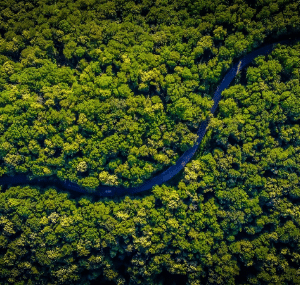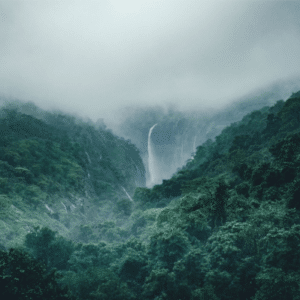About Rainforests
- A rainforests is a forest with tall evergreen trees, which receive a high amount of rainfall. Rainforests are considered to be the oldest living ecology on earth and are surviving for the past seventy million years. Rainforest are extremely complex and diverse. Rainforest cover only six percent of Earth’s total surface but are home to more than half of the world’s species of animals and plants.
- Rainforest are found on every continent on earth except Antarctica, and they thrive on all continents. The world’s largest rainforest is the Amazon forest. Rainforest help in regulating climate and their rich biodiversity is very important for the well-being of the planet, humans, and the various species it is home to.
Types of rainforest
Tropical Rainforest
Tropical rainforest are located between the Tropic of Cancer and the Tropic of Capricorn. The sunlight in these regions strikes almost straight and the temperature is high between 21 to 30 degrees celsius. These temperatures keep the air wet and warm. These areas experience high rainfalls because of the humidity. Tropical rainforest are found in Western and Central Africa, Western India, Central and South America, Southeast Asia, and Australia.
Temperate Rainforest
Temperate rainforest are located in the mid-latitudes, and experience temperatures colder than tropical rainforest. The temperature of temperate rainforest are cooler than tropical rainforest from 10 to 21 degree celsius, and experience less rainfall and less sunlight. Temperate rainforests are found on the coasts of the United Kingdom, Japan, New Zealand, Norway, Pacific Northwest in North America.
Threats to Rainforest
Why we should save Rainforest

Rainforest, jungle, trees
- We must preserve our rainforest. Rainforests are home to over 30 million species of plants and animals, which is half of the wildlife and two-thirds of plant species. Rainforests help in regulating world climate, rainforests are huge reservoirs of water, droughts will become more common if rainforests deplete as they recycle huge amounts of water, feeding the rivers, lakes, and irrigation systems.

A birds-eye view of a rainforest
- Rainforest prevent soil erosion. The trees in the rainforest absorb all the nutrients from the soil because of which the soil has less nutrition value, but the long roots from the trees bind the soil together, also the huge canopy layer protects the soil from heavy rainfall. If the trees are cleared from the forest, the unprotected soil will wash away in heavy rains.
- 25 percent of modern medicines are made from tropical forest plants.
Internal links:
Mini Switzerland of India: Khajjiar you need to know everything – Erakina




